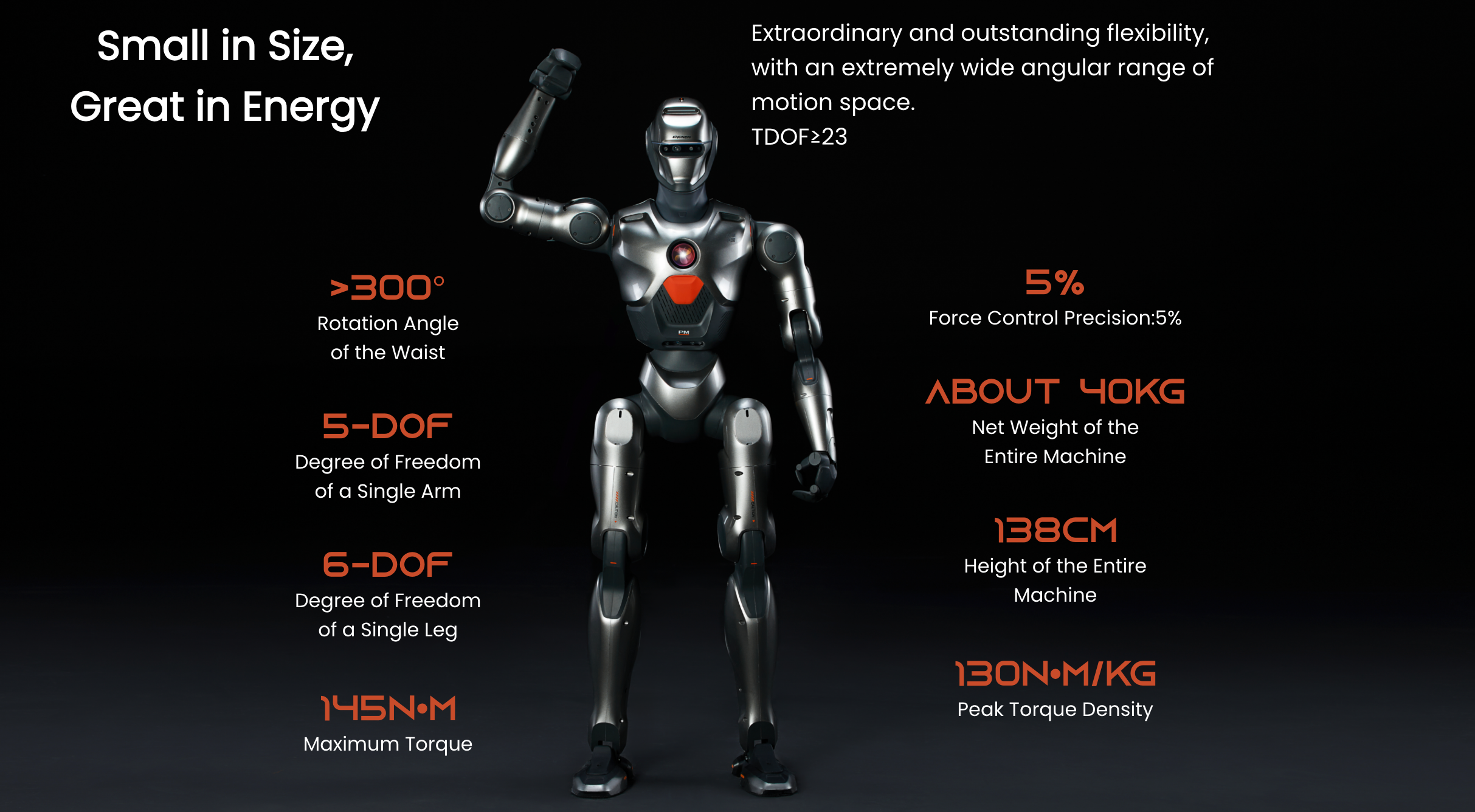The SA01 is EngineAI’s first bipedal robot, aimed primarily at education and research. Standing as a nimble, slightly smaller-than-human prototype, it is constructed from durable aluminum alloy and equipped with robust reinforcement learning algorithms. What makes the SA01 fascinating is its balance between flexibility and reliability - it’s strong enough to withstand rigorous academic use while sophisticated enough to perform human-like gestures, walk dynamically, and respond to its environment. For universities and research labs, it’s a window into the challenges and possibilities of humanoid mobility, offering hands-on insights into robotics without ever losing its playful, almost personable charm.
The SE01 is EngineAI’s flagship humanoid, full-sized at 170 centimeters and weighing in at 55 kilograms, designed for industrial applications that require both precision and dexterity. With 32 degrees of freedom and harmonically optimized joints, it can perform squats, push-ups, and fluid walking patterns while navigating cluttered spaces with surprisingly human-like grace. Its deep learning algorithms allow it to adapt to dynamic environments, making it ideal for material handling, precision assembly, and other repetitive tasks where intelligence and subtle movement matter. Seeing the SE01 in motion is mesmerizing; it’s easy to forget it’s a machine, and when it briefly strolled through the crowds at the 2024 IAA Mobility in Munich, it turned heads not because it was flashy, but because it moved with purpose.
The PM01 is a lighter, more agile sibling, standing at 138 centimeters and weighing just 40 kilograms. Engineered for high-performance dynamic movement, it features 24 degrees of freedom and a waist capable of 320-degree rotation, allowing it to twist, bend, and navigate with uncanny fluidity. Dual-chip architecture combining Intel and NVIDIA processing power lets the PM01 react in real time, whether running obstacle courses in labs or demonstrating mobility concepts for R&D purposes. Its swappable battery ensures operational flexibility, and while it may be smaller than the SE01, it arguably packs more personality in motion, offering a glimpse at how humanoids could operate efficiently in tight spaces without sacrificing versatility.

EngineAI’s humanoids collectively challenge our narrow definitions of mobility. They remind us that moving through space is about more than speed or distance; it’s about intelligence, adaptability, and interaction. Each of their model offers a distinct window into the future of robotics, whether for research, industrial tasks, or human-centered service. As these humanoids step off the leash and into the world, they invite us to rethink what it means to move, and to imagine a landscape where mobility includes machines that learn, adapt, and engage with the spaces around them.

Photo Copyright: EngineAI Robotics Technology Co., Ltd.
Secure your MOTION MAG copy online now: EDITION SIX.

.png)
